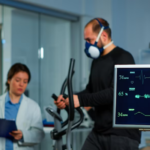
Greetings from the enthralling world of medical imaging! Have you ever wondered how medical professionals can examine your internal organs without cutting you open? The employment of electromagnetic waves holds the key to the solution. Yes, you read that right: a variety of medical disorders can be detected and treated using the same waves that provide Wi-Fi and cell phone reception.
Medical imaging is essential to contemporary healthcare because it enables doctors to view into the body and find issues that might not be obvious from the outside. This might range from malignant tumours to damaged bones. Doctors can create precise images of the inside organs and structures of the body using various electromagnetic wave types, offering important information that can help with diagnostic and therapy choices.
Medical imaging techniques come in a variety of forms, each with unique advantages and disadvantages. These include radiographic techniques including X-rays, CT scans, MRIs, ultrasounds, and nuclear medicine imaging. In this article, we’ll examine each of these methods in more detail and consider how modern medicine use them to identify and treat a variety of illnesses. Therefore, take a seat back, unwind, and get ready to be astounded by the amazing science that is medical imaging!
X-rays
The electromagnetic radiation known as X-rays can enter the body and create images of its inside organs. They function by moving through the body and being absorbed to various degrees by various tissues. For example, bones appear white on X-ray images because they absorb more X-rays than soft tissue. X-rays are frequently used in medical imaging to identify a wide range of illnesses, from lung disease to fractured bones.
The speed and convenience of X-rays are two of its main advantages. They are easily conducted and accessible in the majority of medical settings. They are also quite inexpensive when compared to other medical imaging techniques. X-rays do have certain limits, though. They can result in false negatives if a fracture is not seen on the X-ray because they are not as good at imaging soft tissue as they are at imaging bones. Furthermore, long-term exposure to high radiation levels might be unhealthy for the body.
Broken bones, dental issues, pneumonia, and lung cancer are just a few of the medical ailments that are frequently diagnosed and treated by X-rays. Additionally, they can be used to track the development of diseases like osteoporosis. Despite some of their drawbacks, X-rays are nevertheless a useful tool in the field of medical imaging because they give doctors quick and easy access to pictures that can aid in making diagnoses and treatment choices.
CT, or computed tomography
X-rays and computer technology are used in computed tomography (CT) scans to create fine-grained cross-sectional images of the body. A 3D image is created by reconstructing several X-ray images from various angles as the CT scanner rotates around the patient. Many different medical diseases, such as cancer, heart disease, and bone fractures, are frequently diagnosed through CT scans.
The capacity of CT scans to create extremely detailed images of inside structures, which enables clinicians to see things that might not be seen on other methods of medical imaging, is one of their main advantages. They can be used to guide certain medical operations, such as biopsies, and are also quicker than MRI scans. However, compared to other medical imaging procedures, CT scans do expose patients to more radiation, which is concerning, particularly for young children or pregnant women.
Cancer, heart disease, lung illness, and bone fractures are just a few of the medical disorders that can be diagnosed and followed up on with CT scans. They can also be used to direct procedures like needle biopsies, in which a small sample of tissue is taken for analysis. The ability of CT scans to provide highly detailed images makes them a vital tool in the field of medical imaging, even though they do have some limits. This information helps clinicians make informed decisions about diagnosis and therapy.
MRI, or magnetic resonance imaging
A powerful magnetic field and radio waves are used in magnetic resonance imaging (MRI) scans to provide precise images of the inside organs and tissues of the body. The protons in the body’s water molecules are aligned by a strong magnetic field produced by MRI scanners. The protons then release signals as a result of the radio waves, which are detected by the machine and assembled into a detailed image. MRI scans are frequently used to identify diseases like tumours, joint issues, and damage to the brain and spinal cord.
The ability of MRI scans to generate extremely detailed images of soft tissue, such as organs, muscles, and nerves, is one of their biggest advantages. They are a safer choice for some individuals because they are non-invasive and do not use ionising radiation. However, MRI scans can take longer than other types of medical imaging, and some individuals with certain implants or equipment may not be candidates.
Tumours, joint issues, heart disease, brain and spinal cord injuries, and heart disease are just a few of the medical diseases that can be detected and followed up on with MRI scans. Additionally, they can be used to direct certain medical procedures, such biopsies or the implantation of medical equipment. Despite some of their limitations, MRI scans are an important tool in the area of medical imaging because they can provide fine-grained images of soft tissue, giving doctors useful data to help them make diagnoses and treatment choices.
Ultrasound
Ultrasound creates images of the internal organs of the body using high-frequency sound waves. An ultrasound machine uses sound waves to create echoes that are picked up by the device and used to recreate a detailed image of the body’s tissues and organs. However, they can also be used to identify a wide range of other medical disorders. Ultrasound scans are frequently used throughout pregnancy to monitor foetal development.
The fact that ultrasound is non-invasive and does not emit ionising radiation makes it a safe alternative for many patients, which is one of its main advantages. In addition, it is reasonably priced when compared to other medical imaging techniques. Ultrasound scans, however, might not be able to create images that are as detailed as those produced by other medical imaging techniques, and they might not be appropriate for people with certain medical conditions.
A wide range of medical issues, such as complications during pregnancy, gallbladder disease, liver illness, kidney stones, and heart disease, can be identified with ultrasound scanning. Additionally, they can be utilised to direct medical procedures like biopsies or the implantation of medical equipment. In the area of medical imaging, ultrasound is a crucial tool for giving clinicians the knowledge they need to make informed decisions about diagnosis and treatment.
Imaging in Nuclear Medicine
Nuclear medicine imaging creates images of the body’s internal structures and processes using minute quantities of radioactive substances called radiotracers. A specific camera that creates images based on the radioactive emissions detects the radiotracer once it is injected, eaten, or inhaled by the patient. Cancer, heart disease, and other medical disorders are frequently diagnosed and treated with nuclear medicine imaging.
The capacity to detect functional changes in the body’s organs and tissues, which provides information beyond what can be detected with other methods of medical imaging, is one of the advantages of nuclear medicine imaging. Additionally, it is non-invasive and useful for making early diagnoses of illnesses. Nuclear medicine imaging does, however, involve the use of radiation, and the radiation exposure may be greater than with other medical imaging techniques.
Cancer, heart disease, thyroid diseases, and bone abnormalities are just a few of the medical conditions that can be diagnosed by nuclear medicine imaging. It can also be used to keep track of how well some medical procedures, such cancer therapy, are working. Nuclear medicine imaging, despite its drawbacks, is a vital tool in the field of medical imaging and offers doctors useful data to help them make diagnoses and treatment decisions.
Conclusion
In conclusion, medical imaging is essential to the delivery of contemporary healthcare. Doctors can detect and treat a variety of medical disorders using imaging techniques like X-rays, CT scans, MRI scans, ultrasound, and nuclear medicine imaging. Depending on the patient’s medical state, clinicians may select a certain imaging modality. Each imaging technology has advantages and limits.
The many imaging procedures that are available to patients should be understood, along with their advantages and disadvantages. Additionally, patients should be ready to question their doctors about the recommended imaging procedure, the rationale for it, and any possible hazards.
Patients should also actively participate in their healthcare by visiting the doctor often and communicating any symptoms or concerns with them. Patients can make sure they get the right medical imaging services they require for an accurate diagnosis and course of treatment by doing this.
In conclusion, medical imaging is a crucial component of contemporary healthcare, and individuals should be proactive in learning about the imaging services that are offered to them. Together, clinicians and patients can use medical imaging to enhance healthcare outcomes and promote better health.
Read More You May Like:
- The Latest Advances in Electro-Medical Devices: Enhancing Patient Care
- The Role of Electro-Medical Devices in Rehabilitation and Physical Therapy
- Understanding TENS Therapy: How It Works and Who Can Benefit
- Electrocardiography (ECG): Understanding Heart Health Through Electrical Signals
- Electroconvulsive Therapy (ECT): A Guide to the Controversial Treatment for Mental Illness








